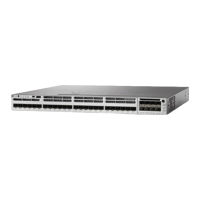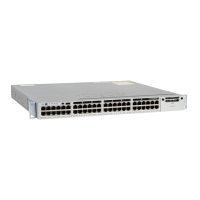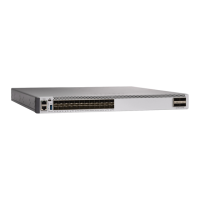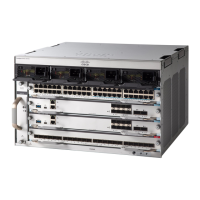Step 2 Start the terminal-emulation program on the PC or the terminal. The program, frequently a PC application
such as HyperTerminal or ProcommPlus, makes communication between the switch and your PC or terminal
possible.
Step 3 Configure the baud rate and character format of the PC or terminal to match the console port default
characteristics:
• 9600 baud
• 8 data bits
• 1 stop bit
• No parity
• None (flow control)
Step 4 Power on the switch as described in the switch getting started guide.
Step 5 The PC or terminal displays the bootloader sequence. Press Enter to display the setup prompt.
Connecting the USB Console Port
Procedure
Step 1 If you are connecting the switch USB console port to a Windows-based PC for the first time, install the USB
driver. See Installing the Cisco Microsoft Windows USB Device Driver, on page 105.
USB Type A port on the switch provides file system support and is NOT a console port. See USB
Type A Port section.
Note
Figure 88: Connecting the USB Console Cable to the Switch
Catalyst 3850 Switch Hardware Installation Guide
103OL-26779-05
Configuring the Switch
Connecting the USB Console Port

